
A New Biography of Frank Church Sheds Light on a Lost Breed of Liberal Crusader Whose Investigation into the Abuses of the Intelligence Agencies Resonates Today
In his 1966 song “Love Me, I’m a Liberal,” Phil Ochs mocked the pretensions of liberal Democrats of his era who supported the purge of communists from the AFL-CIO; saw Malcolm X as a dangerous radical, backed U.S. military intervention in Korea, and were all for civil rights until the Blacks and Puerto Ricans moved next door.
Ochs’s song has taken on even greater resonance in the age of Russia Gate, where liberal Democrats have been among the most fervent hawks on Ukraine while supporting conspiracy theories about Russian subversion from the playbook of the John Birch Society—a Cold War-era group that accused Dwight Eisenhower of being a Soviet communist agent.[1]
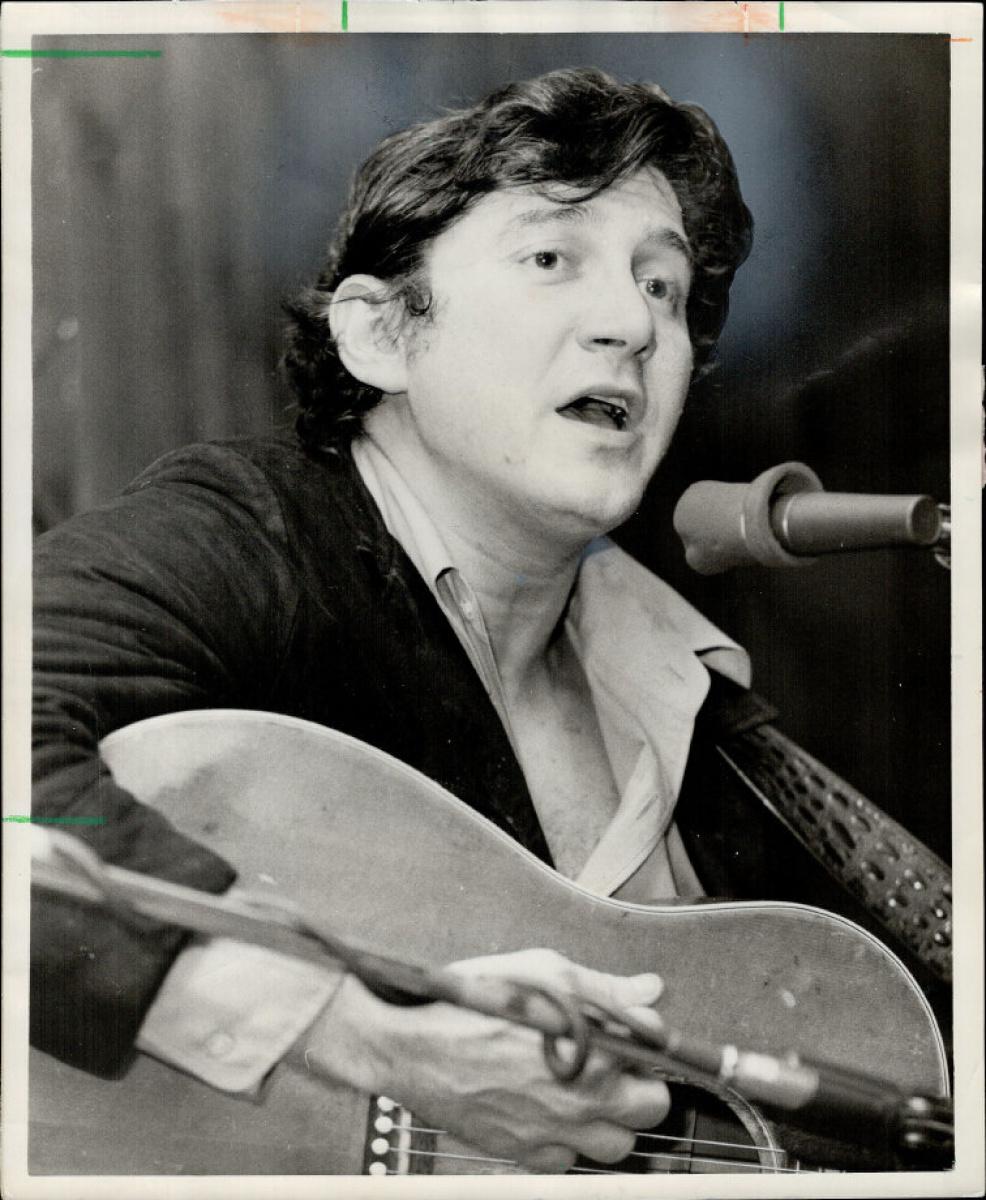
James Risen’s new biography of Frank Church, The Last Honest Man, casts nostalgia on the era in which Ochs’s song was written, when there were at least some liberals that were not complete phonies. One such man was Frank Church, a Senator from Idaho who, in the mid-1970s, led influential hearings into the abuses committed by the FBI and CIA.
These hearings exposed the CIA’s involvement in illegal drug testing and surveillance of American citizens, political assassinations, and a right-wing coup in Chile, among other crimes.

Church’s efforts were stonewalled by the political reactionaries of his time—Dick Cheney, Donald Rumsfeld, Ronald Reagan, Gerald Ford and Henry Kissinger—all of whom tried to protect the CIA.
At the age of 100, Kissinger, oddly, is now considered a moderate, urging restraint in the war in Ukraine, which many liberals support. These same liberals defend the FBI and CIA and accuse Donald Trump’s supporters of being conspiratorial-minded in their belief in the “deep state”—a role reversal from Church’s era where it was liberal Democrats who were most skeptical of the FBI and CIA and Republicans who were intent on defending these agencies.
Today, the Democrats are led by men like Adam Schiff, the grandfather of Russia Gate who reveres the CIA; and women like Vice President Kamala Harris, a new Cold War hawk and arch-imperialist who used red-baiting tactics during the 2020 Democratic Party primary debates against the only Church-like figure in the field, then Representative Tulsi Gabbard.


What has happened in the last 50 years to facilitate such a shift?
The answer has a lot to do with the unprecedented tsunami of secret and unregulated money suddenly allowed to pour into politics by four landmark Supreme Court decisions, starting with Buckley v. Valeo in 1976, followed by First National Bank of Boston v. Bellotti in 1978, Citizens United v. Federal Election Commission in 2010 and McCutcheon v. Federal Election Commission in 2014.
These paradigm-changing court decisions turned the money spigot on full blast, sweeping away virtually all prior limits on election spending. Not only could billionaire candidates spend their own fortunes to crush their opponents and buy election victories, but so could billionaire supporters such as the Koch Brothers, Sheldon Adelson, George Soros, Micheal Bloomberg, Peter Thiel, Paul Singer and Stephen Schwarzman.
More important, so could “black box” political action committees (PACs ) stuffed with hundreds of millions of dollars in corporate funding from banks, hedge funds, pharmaceutical companies, oil companies and weapons manufacturers such as Raytheon, Honeywell, General Dynamics, Lockheed Martin, Chevron, Exxon, Delta Airlines, FedEx, General Motors, Cigna, AT&T, Walmart and Pfizer.

These billionaires, together with the huge corporate enterprises they own or control, comprise what former CIA-analyst Ray McGovern calls the MICIMATT or Military-Industrial-Congressional-Intelligence-Media-Academic-Think-Tank Complex,
This complex, empowered by the aforementioned Supreme Court decision, rose to enormous power during the last half century and now exercises total control over both major parties. Its hegemony in every area of national activity, especially its ownership and control of the media, enables it to censor or even better co-opt all dissenting voices, resulting in what Chris Hedges has termed the “death of the liberal class.”[2]
The Last Honest Man in the Senate
James Risen is a seasoned national security correspondent who currently writes for The Intercept. His book on Church is written with his son Thomas Risen, who also writes for The Intercept.
The Risens consider Church to be the “last honest man in the Senate,” a sound judgment.
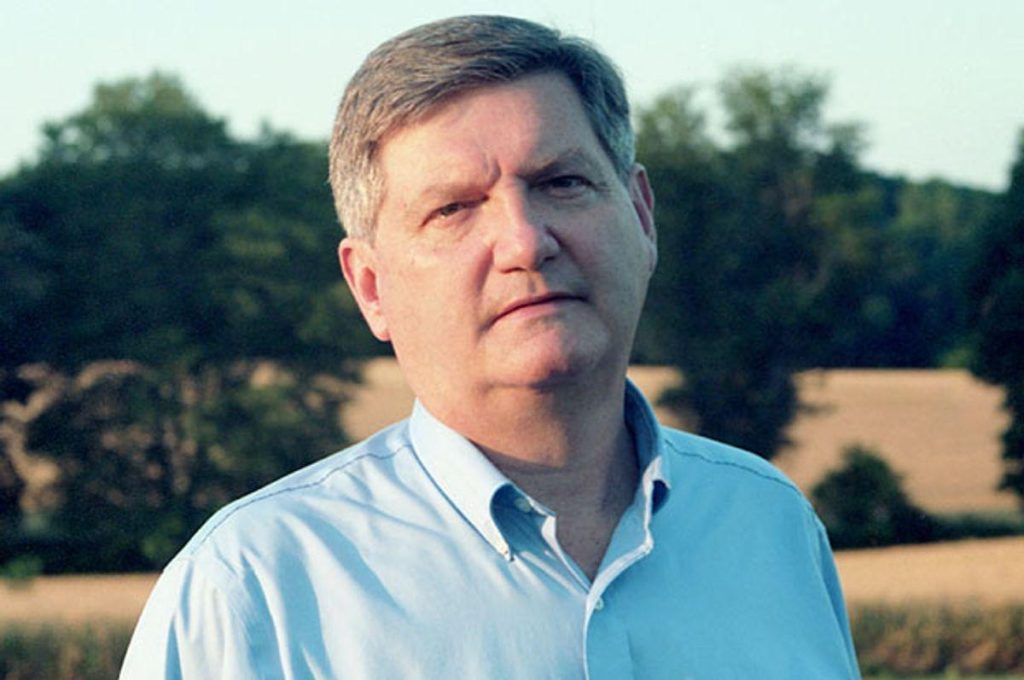
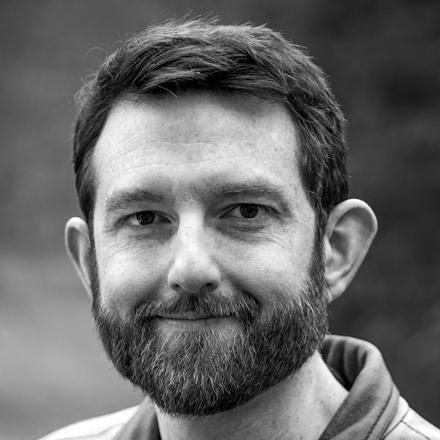
Born in rural Idaho, Church was staunchly liberal on many issues, including those related to organized labor and the environment, though he was opposed to gun control.
He grew up admiring Idaho’s long-time Republican Senator William Borah, the chairman of the Senate Foreign Relations Committee from 1924-1933 who opposed U.S. involvement in World Wars I and II; promoted a Good Neighbor Policy with Mexico and South America; and sought diplomatic recognition of the Soviet Union following the Bolshevik Revolution.[3]
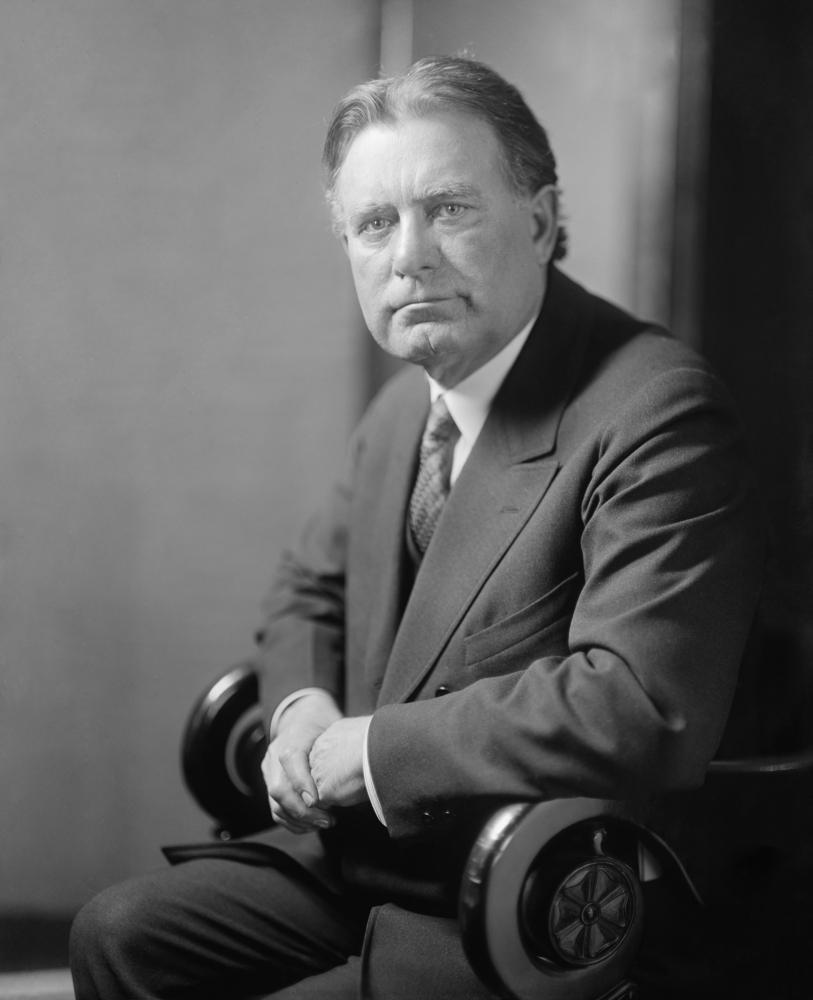
After enrolling at Stanford, Church joined the military in 1943 and trained to be an Army intelligence analyst. He was assigned as an intelligence officer to the U.S. Army’s Combat Command, which was supporting the Chinese Nationalist Army of Chiang Kai-shek in its fight against both the Japanese and Chinese Communist Party (CCP).
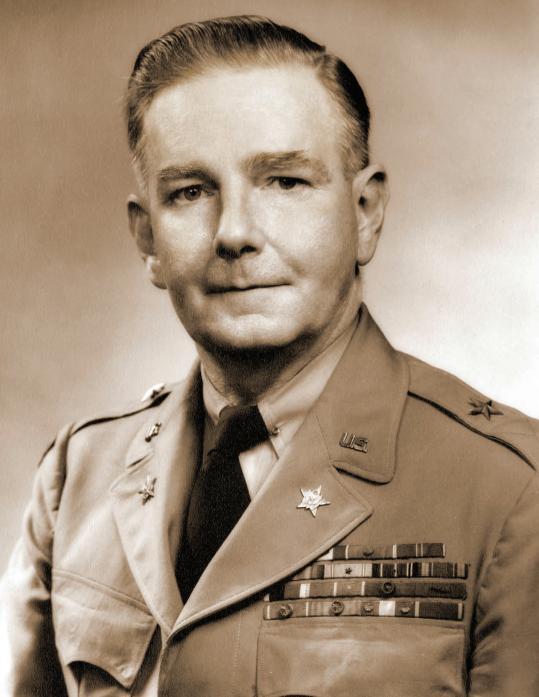
Recipient of a bronze star, at the age of 20, Church became a main briefer to General Robert McClure, the chief of the Chinese Combat Command, who liked Church so much that he chose him to witness the formal surrender of Japanese troops in Nanking in September 1945.
Risen does not mention it, but McClure is considered the “forgotten father of U.S. Army special warfare.” He specialized in psychological warfare operations, which the CIA still routinely utilizes.[4]
Observing a master first-hand, Church came to understand the deceptiveness of the U.S. military and CIA at this early stage in his career, which is what likely prompted his attempts decades later to want to publicly expose the CIA.
Young Church witnessed how, through the magic of propaganda, the U.S. government transformed the public image of Chiang—whom Church observed to be a corrupt and venal figure—into the reincarnation of Abraham Lincoln and Jesus Christ.
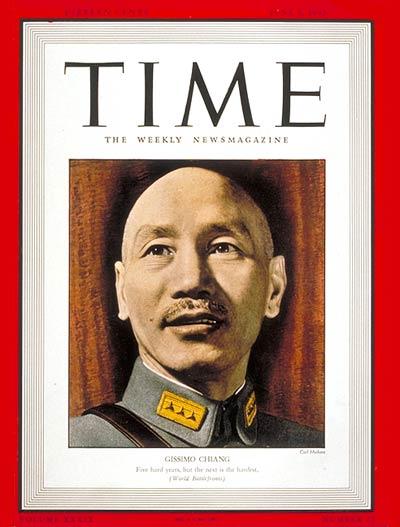
Church further observed the attempt to whitewash the horrific consequences of the dropping of the atomic bombs over Hiroshima and Nagasaki, something about which young Church was aghast.[5]
After World War II, Church supported the 1948 presidential campaign of Henry Wallace, who wanted to remove all U.S. military bases around the world and engage in peaceful diplomacy with the Soviet Union.
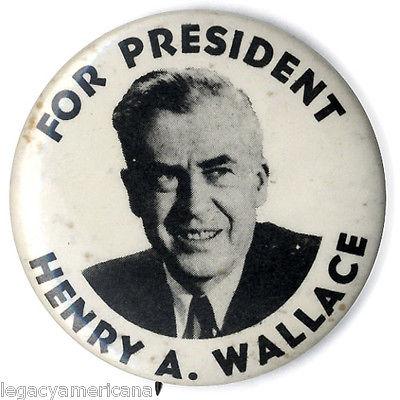
Wallace’s imprint would carry over into Church’s leadership of his famous committee exposing the FBI and CIA, which came at a time when many Americans had become disillusioned by U.S. military intervention in Vietnam.
Church’s education about the CIA’s deceptive ways continued when he became head of the Idaho branch of Crusade for Freedom, a campaign established in the 1950s to help raise funds for Radio Free Europe. Only later did Church learn that this was a CIA propaganda outlet. He said that his work for Radio Free Europe was “the beginning of my disillusionment.” [6]
When Church first ran for the U.S. Senate in 1956, his opponent in the Democratic primary was former Senator and Henry Wallace’s running mate in the 1948 presidential campaign Glen Taylor, a country-and-western singer and entertainer who ran to Church’s left on many issues.
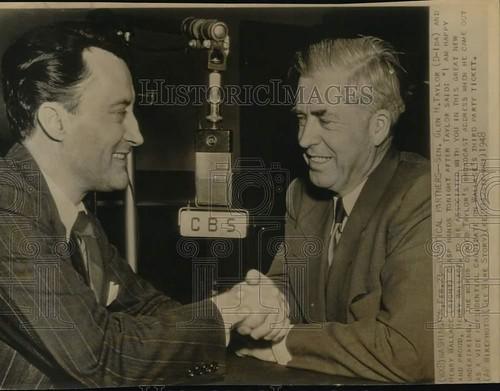
Church had married Bethine Clark daughter of former governor of Idaho Chase Clark, prompting Taylor to depict him as a “puppet of the most powerful Democratic family in the state.”[7]
Church at this time had come to adopt conventional Cold War views. His 1960 keynote address at the Democratic Party Convention in Los Angeles was embarrassingly anti-communist,[8] and he shamefully voted for the Gulf of Tonkin resolution authorizing the American troop deployment to South Vietnam based on the false pretext of an unprovoked attack on a U.S. naval ship in the South China Sea.
With time, Church rediscovered his earlier anti-imperialist sensibilities and became a leading congressional critic of the Vietnam War, sponsoring the 1969 Cooper-Church amendment calling for banning all U.S. troop deployments to Laos and Thailand.
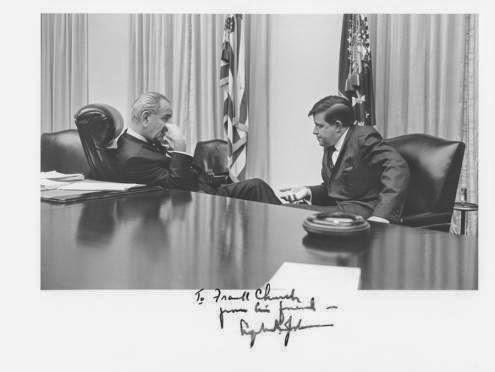
Prior to his chairing the famous hearings on the FBI and CIA, Church chaired a congressional committee that investigated the role played by American-based multinational corporations around the world.
This committee helped uncover the ties between the International Telephone and Telegraph (ITT) Company and CIA, which worked to undermine and overthrow Chile’s socialist government under Salvador Allende (who died in the coup), and the paying of bribes to foreign political figures and corporate executives by U.S. defense contractors like Northrop Corporation and Lockheed.
Church proclaimed that the bribes and payoffs associated with doing business abroad by these companies and others represented “a pattern of crookedness that would make, in terms of scope and magnitude, crookedness in politics look like a Sunday school picnic.”[9]
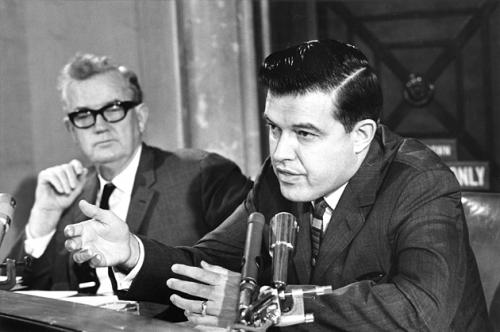
Church was particularly astonished to find that in Japan, Lockheed had not only paid millions in bribes to government officials, but had employed as its bagman Yoshio Kodama, a right-wing militarist and Yakuza founder who functioned as a go-between with Japan’s political elite.[10]
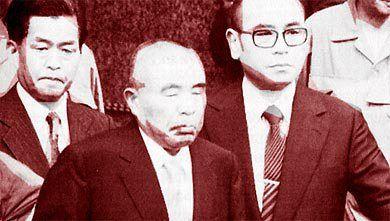
New Constitutional Convention
The Church Committee (formally the Senate Select Committee to Study Governmental Operations with Respect to Intelligence Activities) investigating the abuses of the FBI and CIA was established (in 1975) at a time when the public was increasingly skeptical of government overreach as a result of Watergate and the leaking of the Pentagon Papers by Daniel Ellsberg.
In the 1974 midterm elections, the Democrats won a landslide in Congress, gaining a 60-seat majority in the Senate and a 291-seat majority in the House of Representatives.[11]
Church was selected to head the committee by the Senate Majority Leader, Mike Mansfield (D-MT), who admired Church’s readiness to take on the power structure with his multinational corporation investigations.[12]

The other Democrats on the Church Committee were future Vice President Walter Mondale from Minnesota, Philip Hart of Michigan, Walter “Dee” Huddleston of Kentucky, Robert Morgan of North Carolina and Gary Hart of Colorado.
The Republicans on the committee were Texas Senator John Tower, Barry Goldwater (a critic of Church ever since he introduced the Cooper-Church amendment, which attempted to stop funding for U.S. war efforts in Cambodia), Senate minority leader Hugh Scott, Senator Howard Baker of Tennessee, Charles Mathias of Maryland and Richard Schweiker of Pennsylvania.
While many of the Church committee members were World War II vets, none had enjoyed a cozy relationship with the CIA, nor were they intent on obstructing the investigation[13] —which is clearly not the case with members of today’s House and Senate Intelligence Committees, many of whom are very cozy indeed with the intelligence community and often try hard to obstruct investigations into illicit behavior by the FBI and CIA.
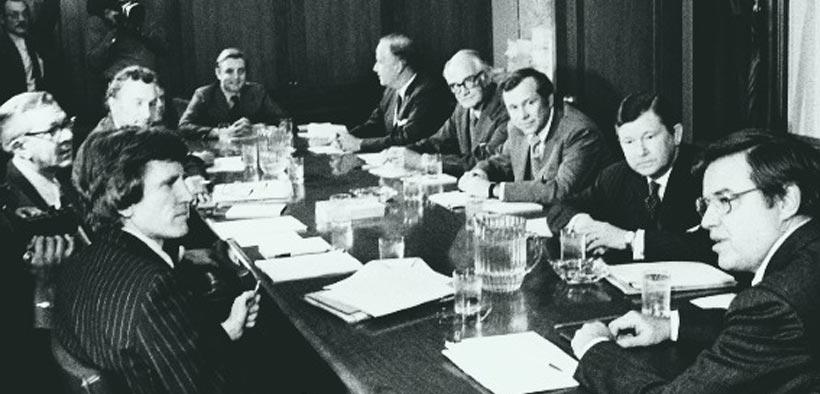
Church said he viewed the committee as a kind of constitutional convention, debating the proper balance between national security and civil liberties.
But to have that debate, the committee’s legal counsel, “Fritz” Schwartz,” son of the famous F.A.O. Schwartz toy store company founder, had to wage and win a grueling bureaucratic battle with allies of the intelligence community in Congress and the White House, so that the committee would have the resources and the power to uncover the worst abuses of the CIA, FBI and other clandestine agencies. The committee’s intent was to educate the public and arouse the kind of massive anger needed to create the momentum for real reform.
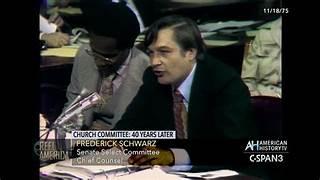
In the Business of Assassination
One of the key findings of the Church Committee was that the CIA had engaged in political assassinations, likely with the sanction of the White House.
Gaining access to an archive of secret CIA cables between CIA headquarters and the CIA station in Congo, the Church committee investigated the assassination of Congo’s first postcolonial Prime Minister, Patrice Lumumba, who had infuriated the Western powers by attempting to nationalize Congo’s rich mineral resources, which Europe and the U.S. had been exploiting and/or stealing for decades.
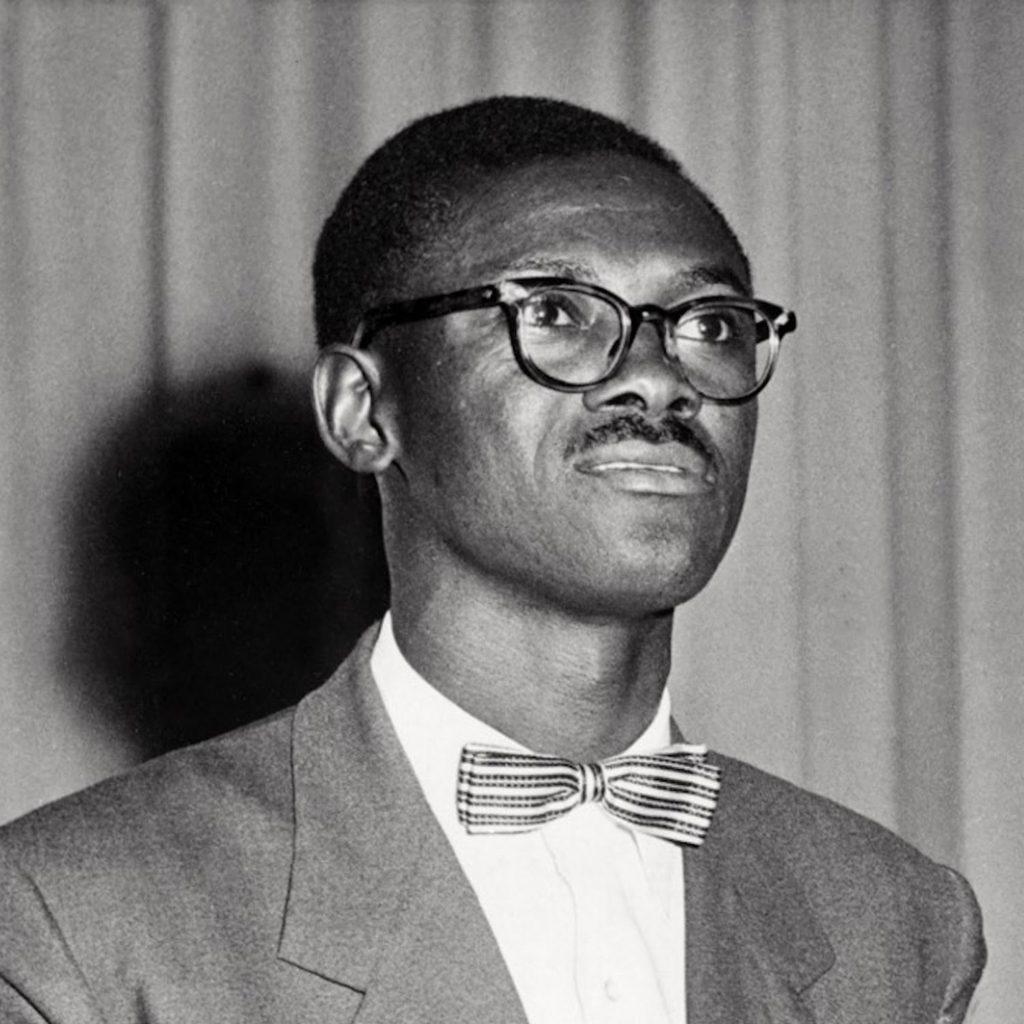
The CIA cables reveal how CIA Station Chief in Congo, Larry Devlin, stoked the Eisenhower administration’s paranoia about the Soviet presence in Congo, with Eisenhower making it clear that he wanted Lumumba assassinated.
CIA Director Allen Dulles sent a cable to Devlin in Leopoldville saying that, “in high quarters here it is the clear-cut conclusion that if [Lumumba] continues to hold high office, the inevitable result will at best be chaos and at worst pave the way to communist takeover…his removal must be an urgent and prime objective and that under existing conditions this should be a high priority of our covert action.”[14]
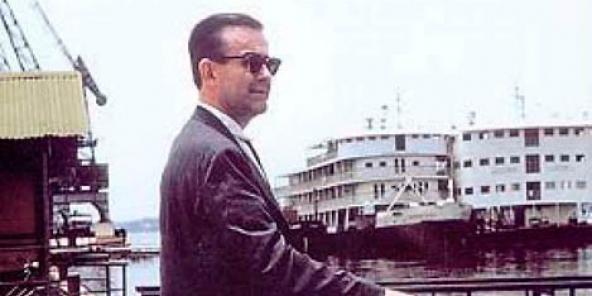
Richard M. Bissell, Jr., the CIA’s chief of clandestine operations, subsequently asked CIA scientist Sidney Gottlieb to develop a poison to kill Lumumba—Gottlieb testified before the Church Committee that he thought the orders came from President Eisenhower.[15]
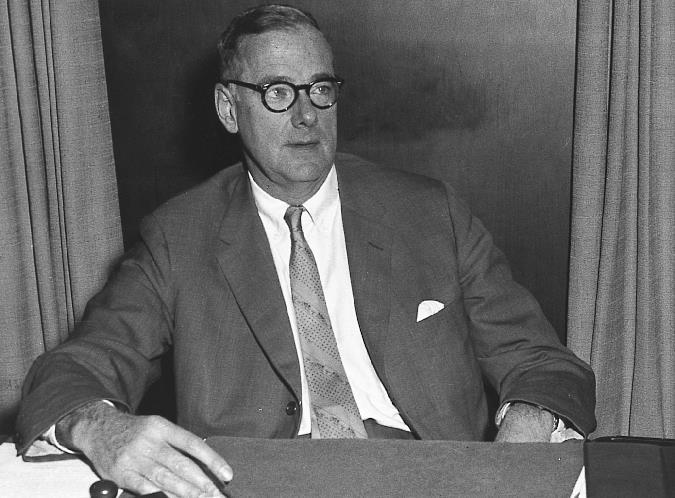
Gottlieb selected a toxin produced at the U.S. Army Chemical Corps installation at Fort Detrick, Maryland, that was supposed to produce a fatal disease that was indigenous to that part of Africa, he told the Church Committee.[16]
Gottlieb gave Devlin the toxin, but it never had to be used because Lumumba was kidnapped and murdered by pro-Belgian agents and local forces funded by the CIA.
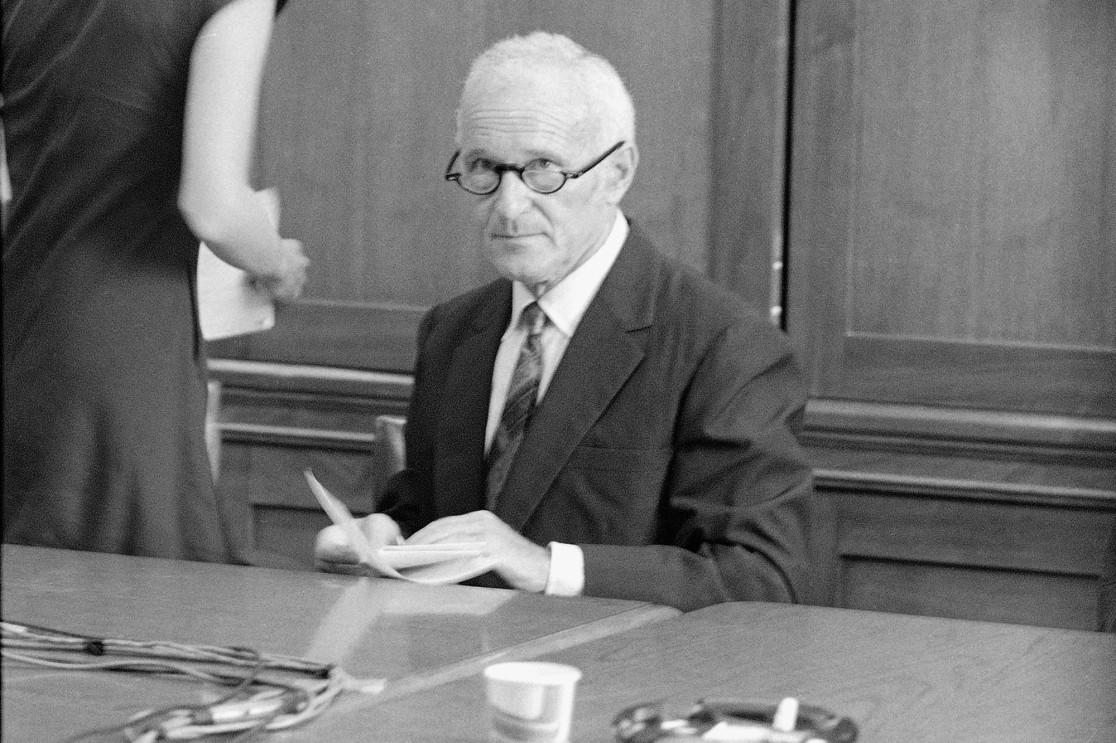
The Church Committee is probably best known for helping to publicly expose CIA-Mafia plots to kill Cuban revolutionary leader Fidel Castro.
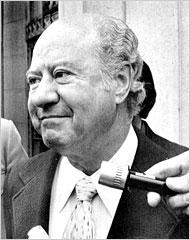
The CIA’s key liaison with the Mafia was found to be Robert Maheu, a private investigator who had also been assigned by the CIA to blackmail Indonesia’s socialist President Sukarno because the Eisenhower administration thought he was, like Lumumba, too independent and insufficiently pro-American.[17]
For the Castro plot, Maheu worked with mobster Johnny Roselli, whose dismembered body was found in a 55-gallon drum floating off a bay in Miami shortly after he testified before the Church Committee.[18] Though relishing the media attention after his testimony, Roselli told Church Committee staffer Patrick Shea that he was not “going to be around much longer.”[19]
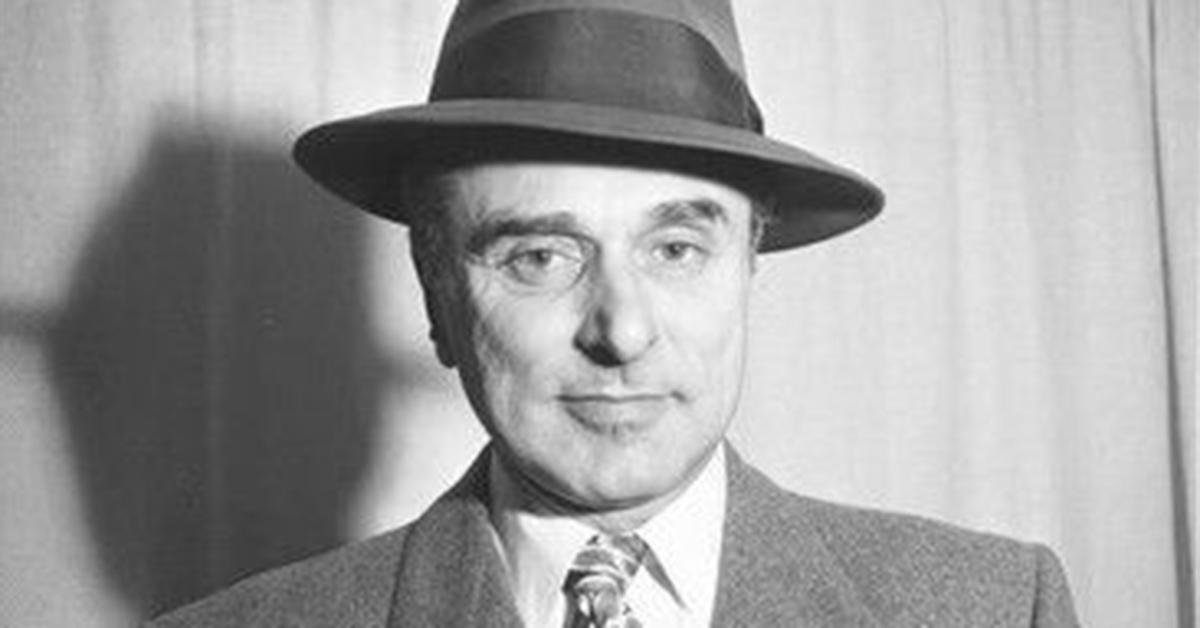
After he was approached by Maheu, Roselli turned to Chicago mob boss Sam Giancana who tried to use poison pills produced by the CIA’s Technical Services Division to kill Castro.[20]
Giancana was murdered in his Oak Park, Illinois, home in June 1975, just before he was scheduled to meet with Shea.[21]
Like Roselli he had violated Omerta, the Mafia code of silence, by testifying before the Church Committee which exposed the underworld connection to the CIA that proved to be long-lasting.[22]

Death of Another Church Committee Witness
The third witness or potential witness to the Church Committee to be murdered was Orlando Letelier, Chile’s Foreign Minister under Salvador Allende.
Letelier was interviewed by Church Committee staffer Rick Inderfurth at his home in Bethesda, Maryland, in the summer of 1975. He helped provide the Church Committee with valuable insights on the Nixon administration’s destabilizing activities in Chile that helped precipitate the fascist coup against Allende on September 11, 1973, led by General Augusto Pinochet.
The destabilizing activities included the Nixon administration’s involvement in the kidnapping of General René Schneider, the commander of Chile’s Armed Forces who was a barrier to the coup because of his loyalty to Allende and Chile’s constitution. (Schneider was killed after he was kidnapped.)
On September 21, 1976, Letelier was assassinated by a car bomb while he drove to work at the Institute for Policy Studies (IPS), a left-wing think tank in Washington, D.C.
Just months before the assassination, Pinochet had met with Henry Kissinger and complained to him about dissidents in Washington who were allegedly spreading lies about his human rights record, singling out Letelier whom he said had “access to Congress.”[23]
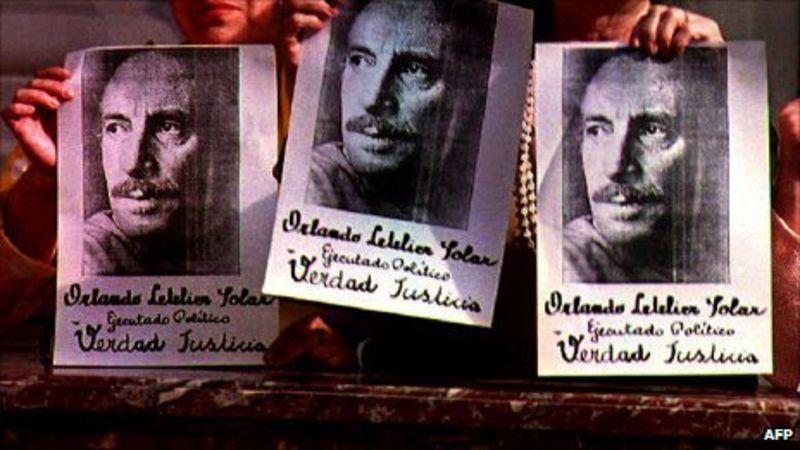
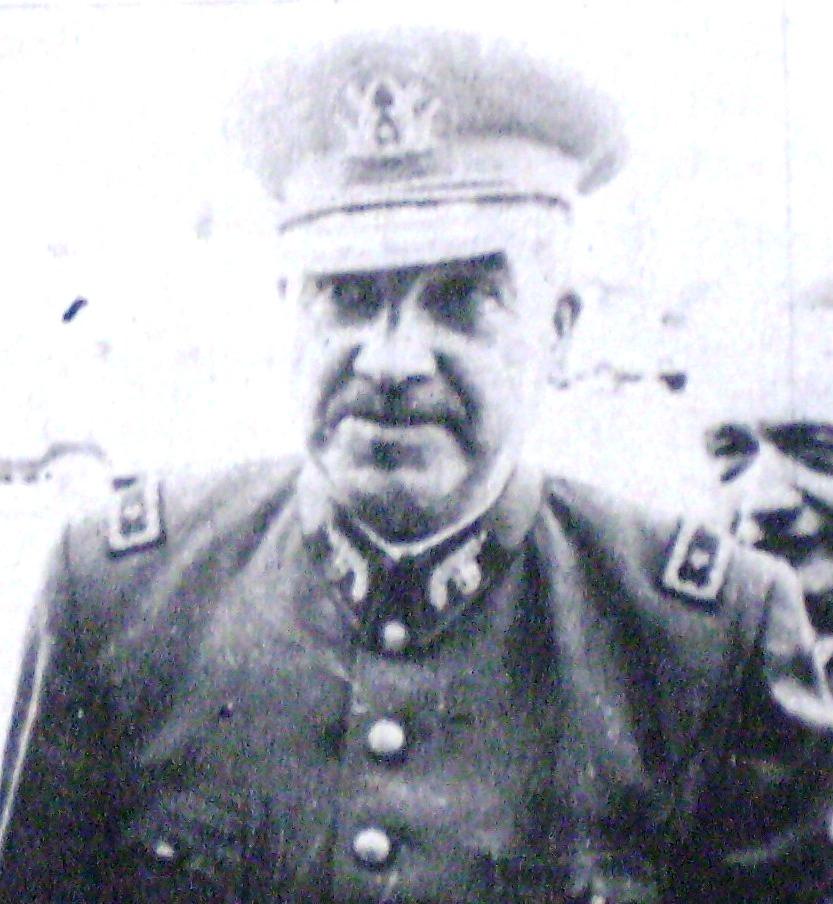
SHAMROCK and MINARET
Besides the CIA, the Church Committee carried out pioneering investigations into constitutional violations carried out by the National Security Agency (NSA), which was then little known.
The constitutional abuses occurred under a highly secretive program code-named SHAMROCK, by which the NSA was collecting information from international telegrams going in and out of New York between Americans and overseas recipients.[24] The CIA also illegally asked the NSA to spy on the communications of civil rights and anti-war protesters who had been placed on a CIA watchlist under a secret program known as MINARET.[25] Among those who were spied on was Church himself.[26]
These programs’ existence was revealed by NSA’s legendary deputy director from 1958 to 1974, Dr. Louis Tordella, who walked Church Committee staffer Britt Snider through the secret history after agreeing to cooperate with the Church Committee.
The Church Committee obtained further valuable information from an NSA whistleblower named James Bamford, who went on to write a pathbreaking history of the NSA, The Puzzle Palace, which was published in 1982.
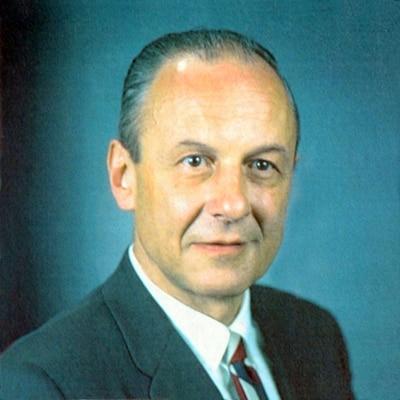
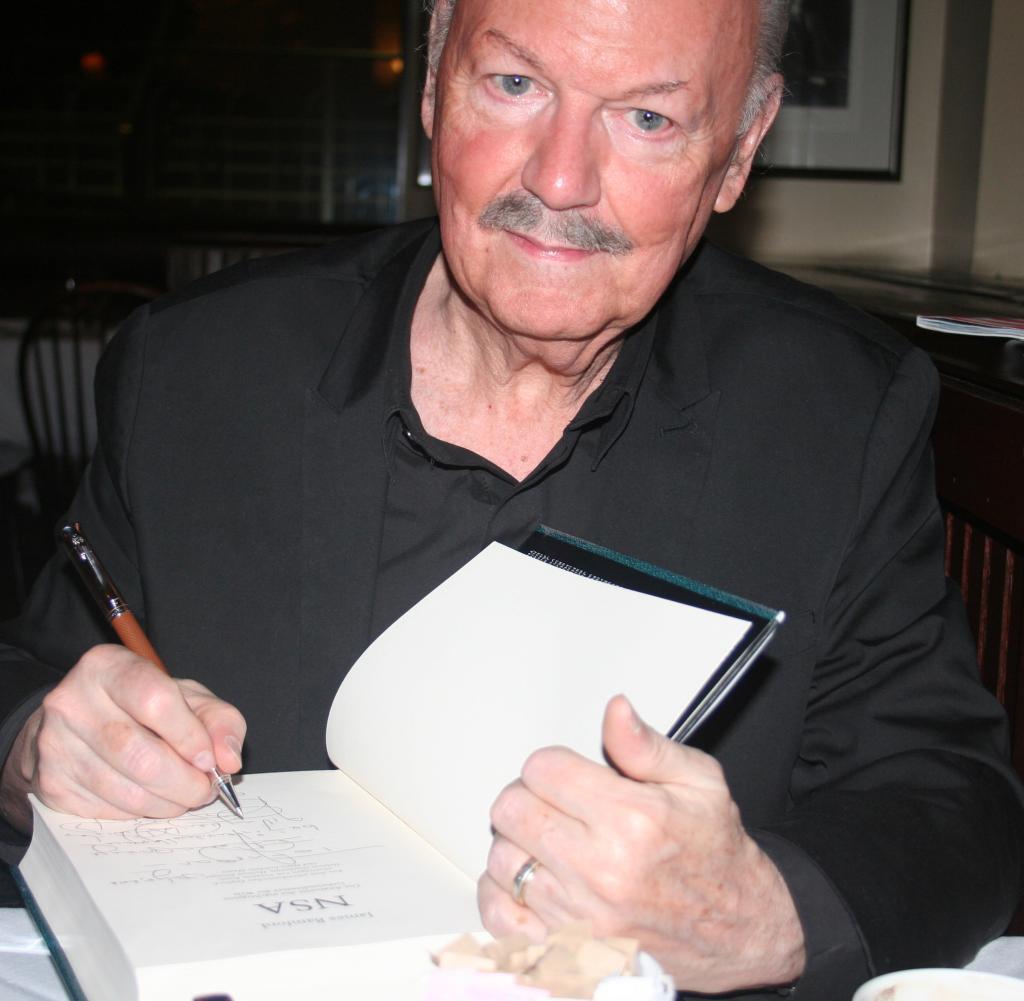
After the NSA revelations, Church presciently said on NBC’s Meet the Press that, “in the need to develop a capacity to know what potential enemies are doing, the United States government has perfected a technological capability that enables us to monitor the messages that go through the air….At any time, that capability could be turned around on the American people and no American would have any privacy left.”
Church warned further that, “if this government ever became a tyranny; If a dictator ever took charge in this country, the technological capacity that the intelligence community has given the government could enable it to impose total tyranny, and there would be no way to fight back because the most careful efforts to combine together in resistance to the government, no matter how privately it was done, is within the reach of the government to know. Such is the capability of this technology….That is the abyss from which there is no return.”[27]
MK-ULTRA
Some of the most explosive revelations of the Church Committee resulted from its investigation into Operation MK-ULTRA, a mind-control experiment in which the CIA covertly carried out unethical drug testing on unwitting suspects.
The Church Committee found that project head Sidney Gottlieb drugged an unknown number of people with LSD in an attempt to discover a magic truth serum that could be used in interrogation, and that other forms of torture were used as part of psychological experiments.
The CIA provided funding to colleges, military bases, hospitals and prisons to operate as fronts to test both witting and unwitting subjects. The MK-ULTRA program had 149 sub-projects extending into Canada where unethical medical experiments were carried out at McGill University under the direction of Dr. Ewen Cameron that were used in the development of the CIA’s enhanced interrogation techniques.[28]
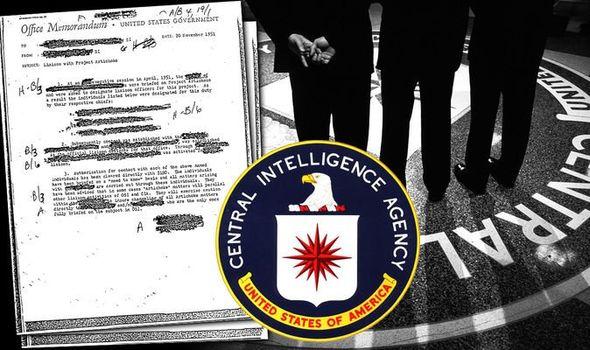
A dramatic moment in the committee’s history occurred when a young Church Committee staffer, Elliot Maxwell, sat down to interview Sidney Gottlieb, whom he referred to as “unbridled evil.”[29] Gottlieb became panicked when he was shown a memo in another session by Senator Richard Schweiker about a CIA organization euphemistically named “Health Alteration Committee” which related to an assassination plot in which Gottlieb had sent a scarf infected with tuberculosis to an Iraqi colonel who wore it and died two weeks later.[30]
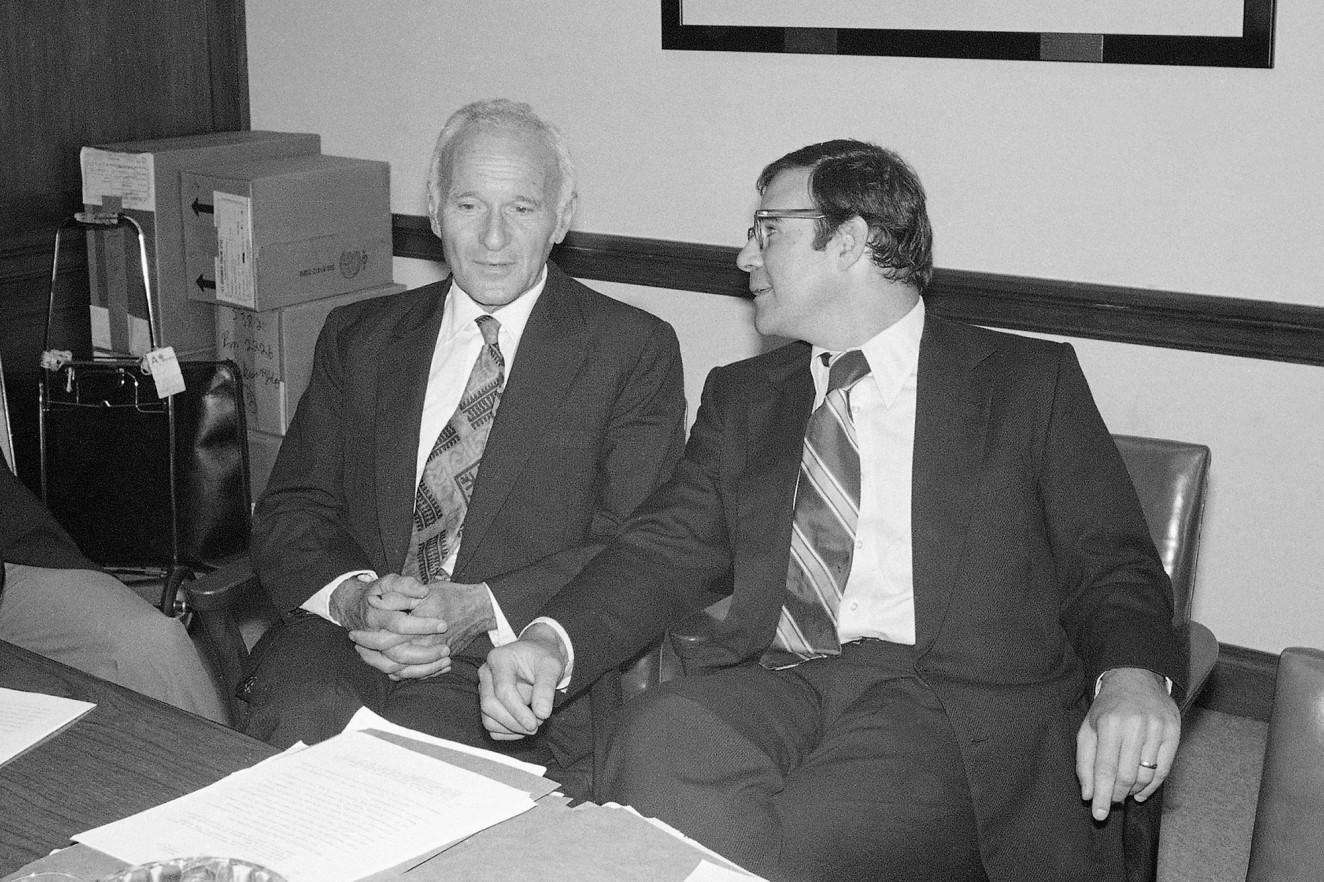
COINTELPRO and Martin Luther King, Jr.
The Church Committee extended its mandate further to probe into the abuses of the FBI’s Counter-Intelligence operation (COINTELPRO) in which the FBI spied on and tried to disrupt left-wing political groups.
Martin Luther King, Jr., was a key target of COINTELPRO. Long-time FBI Director J. Edgar Hoover considered King to be a communist agitator. He was placed under constant electronic surveillance, which exposed his extra-marital affairs, and the FBI wrote letter in an attempt to get King to commit suicide.[31]
The FBI also regularly sought out hand-picked journalists to smear King and coordinated his assassination, though information about this only came to light many decades later.
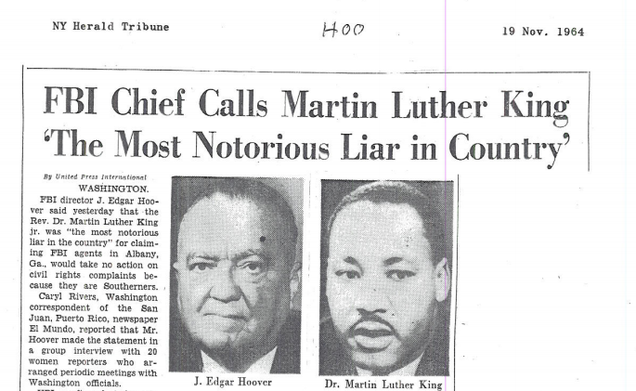
Limitations of Church Committee
Arthur Jefferson, a young Black lawyer on the Church Committee, was eager to expand the probe into COINTELPRO by focusing on the FBI’s involvement in the murder of Chicago Black Panther Party leader Fred Hampton.
At 4:45 a.m. on December 4, 1969, Hampton was killed along with Mark Clark, another Black Panther, during a raid on his apartment by Chicago police officers. Hoover had feared that the charismatic Hampton could become an effective leader for the Panthers.
The FBI’s Chicago field office had an informant close to Hampton who gave the FBI Hampton’s schedule, location, and detailed floor plans of his apartment, including a note locating Fred’s bed.[32]

Jefferson was blocked from investigating Fred’s death as the Hampton case was radioactive from a political standpoint and white America did not then sympathize with Hampton.[33]
Jefferson nevertheless was able to conduct a broader investigation into how the FBI used its COINTELPRO program to disrupt and discredit the Black Panther Party.
One of the tactics was to intensify the degree of animosity between the Black Panther Party and the Blackstone Rangers, a Chicago street gang.
The FBI sent an anonymous letter to the Rangers’ leader, falsely informing him that the Chicago Panthers had a “hit out” on him. The stated intent of the letter was to induce the Ranger leader to take reprisals against the Panther leadership.[34]
Backlash Against Church Over the Death of Richard Welch
The CIA and Executive Branch authorities had it in for Church and his committee, issuing smears in the media and trying to depict the committee as having been orchestrated by the KGB [Soviet intelligence services].
President Gerald Ford fired CIA Director William Colby, who was seen as too cooperative with the committee, replacing him with George H.W. Bush, a Republican partisan who had operated a CIA front company, Zapata Oil, that assisted in the Bay of Pigs operation.[35]
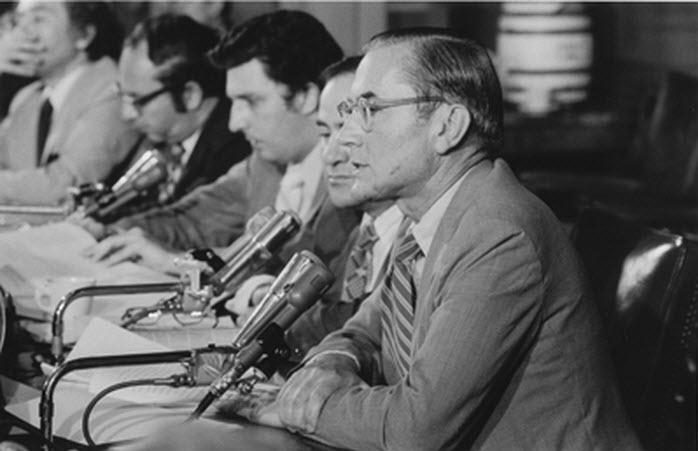

Church was subsequently blamed for the assassination of Richard Welch, the CIA Station chief in Athens, by leftist guerrillas. Journalist Richard Cottrell has alleged that the plot to kill Welch was actually orchestrated as a false-flag operation by the CIA with the intent of smearing Church, as well as blaming Welch’s murder on ex-CIA whistleblower Philip Agee, who had publicized the names of CIA agents he believed had violated the law.[36]
But although Welch’s name had been one of those that Agee had publicized, Agee was not responsible for his outing or his murder. Welch’s role as the CIA’s Athens Station Chief was already a matter of public record, since he had been outed by a local Athens newspaper some time before his murder.

When Jimmy Carter was contemplating selecting Church as his Vice President, he was intimidated after hearing a rumor—spread by the CIA—that The Economist magazine was going to publish a story revealing that the Church Committee had been infiltrated by the CIA.
The rumor dissipated after Carter chose Walter Mondale, Church’s subordinate in running the Church Committee.
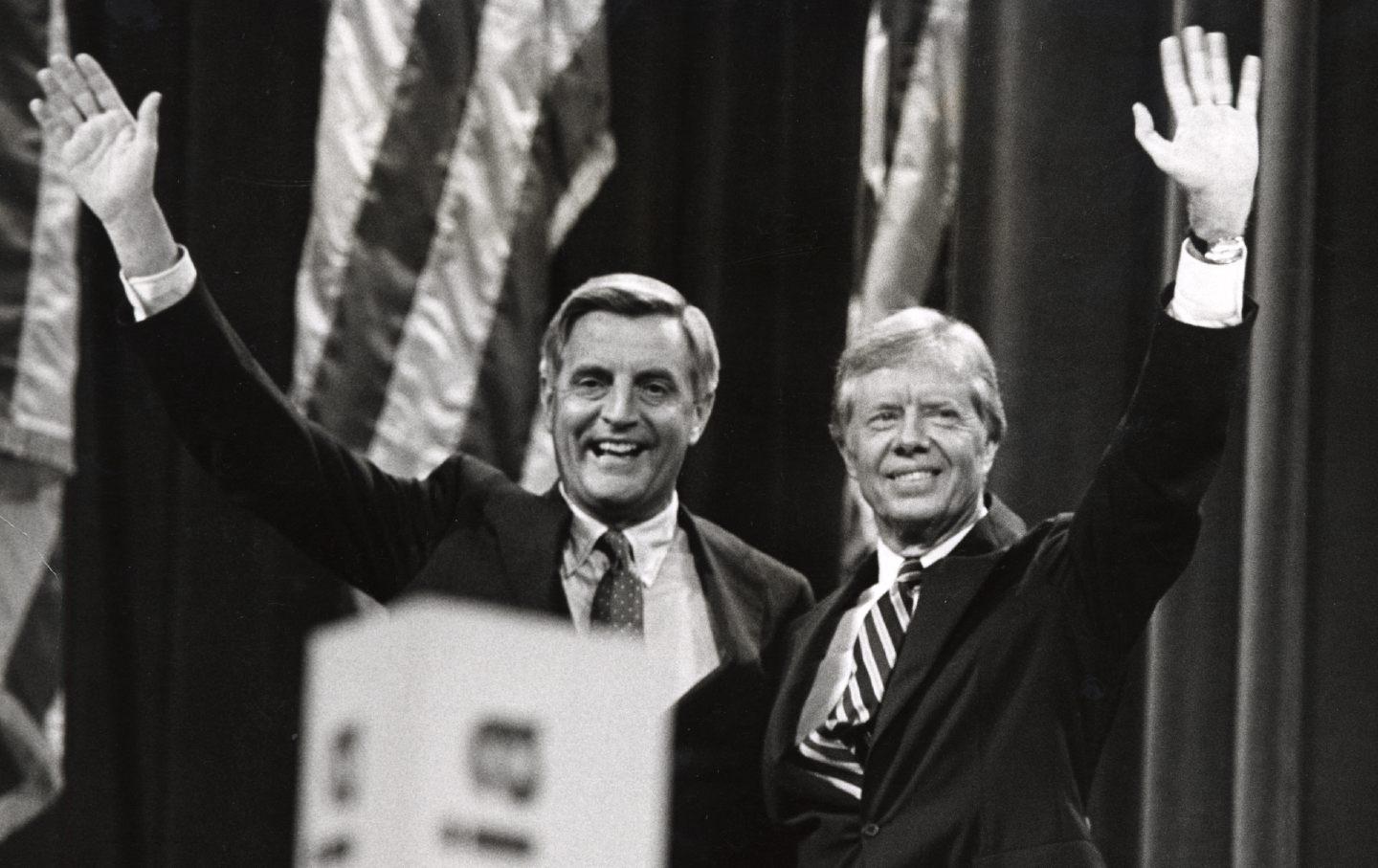
Frank’s son Forrest said afterwards that “there is no member of the Senate [referring to Frank] whom the leaders of our intelligence services would have less preferred sitting a heartbeat away from the presidency.”[37]
One of Church’s most bitter foes was the CIA’s former counter-terrorism chief, James J. Angleton, who had also been born in Idaho.
Angleton collaborated with other CIA veterans to help defeat Church’s bid for another Senate term in 1980 when he and other spooks supported Church’s Republican opponent, Steve Symms.
According to Symms, Angleton would come to his office and smoke cigarettes on his couch while he recounted the damage he claimed that Church had wreaked on the CIA.
When Symms won, he was invited to a party where he said that he was the only person there who was not former intelligence. “It was quite impressive to meet all these people,” Symms said later, “and see how deeply they all despised Church.”[38]

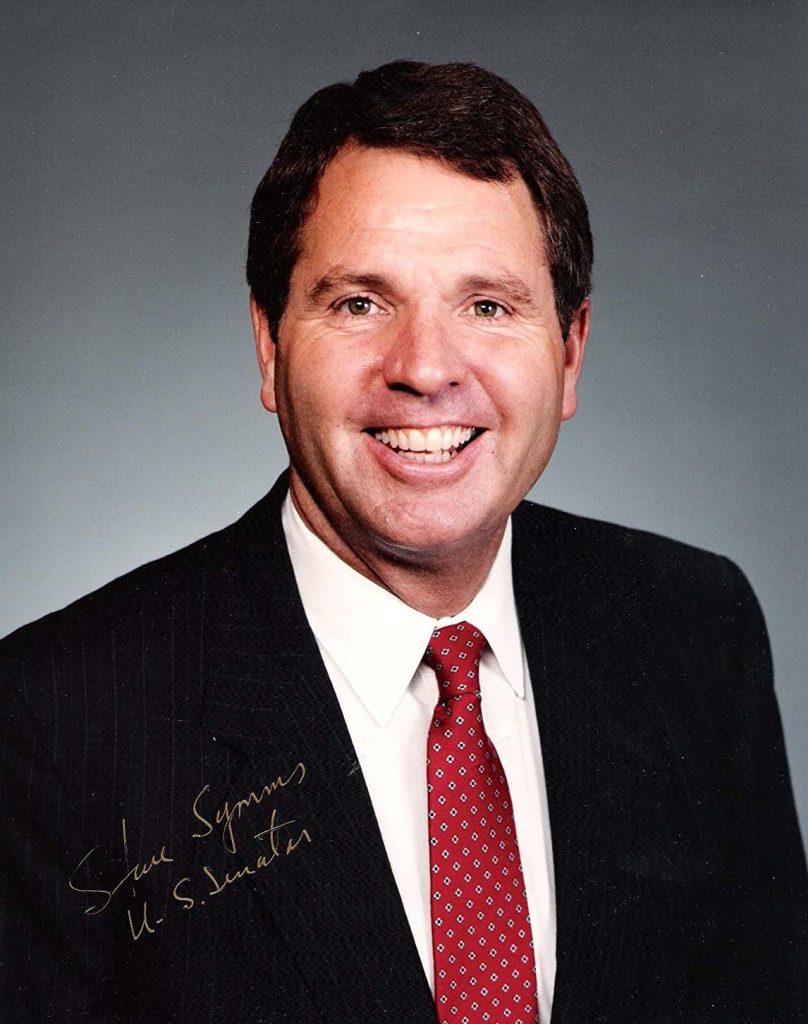
Legacies
Despite the backlash, the Church Committee yielded important reforms, including the enactment of the 1978 Foreign Intelligence Surveillance Act (FISA), which mandated that the government had to obtain a warrant from a federal judge in a new FISA court in order to receive approval to wiretap a U.S. citizen on national security grounds.
President Carter further issued an executive order that imposed broad new restrictions on the U.S. intelligence community, including a ban on the assassination of foreign leaders, and Carter signed into law the Foreign Corrupt Practices Act, which made it a crime for American individuals and companies to bribe officials in foreign countries.
The limitations of the Church hearings were apparent in the 1980s when the CIA again ran wild in Central America. After the 9/11 attacks, Vice President Dick Cheney resurrected his attacks on the Church Committee from when he had been Defense Secretary in the Ford administration.[39]
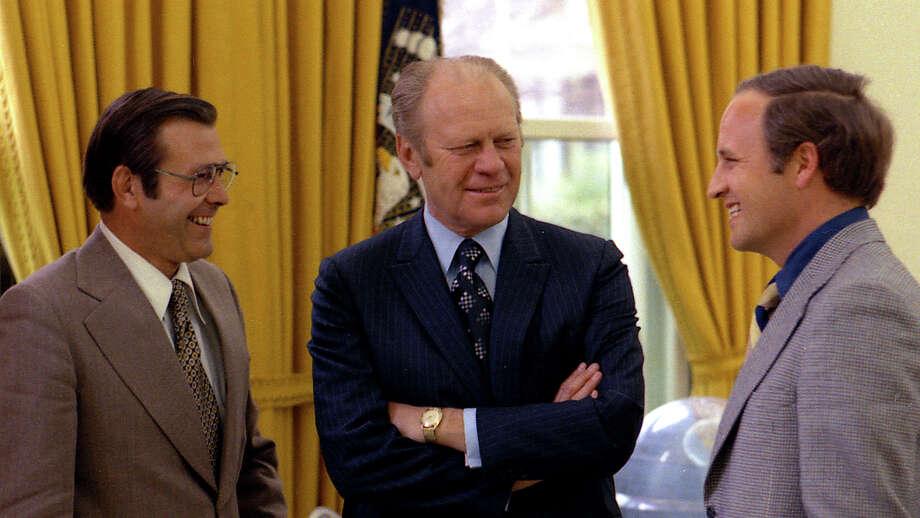
Cheney called for giving the intelligence agencies carte blanche to work on the dark side, a policy endorsed by another Church Committee foe, Henry Kissinger, who wrote in The Washington Post in 2004 that the intelligence services had been “under assault for thirty years ever since the floodgates were opened in the 1970s [a thinly veiled reference to the Church Committee].”[40]
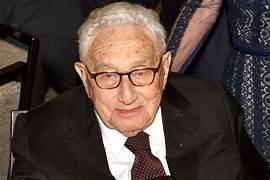
Senator Church, however, has gotten the last laugh from his grave because the public turned against Cheney and Kissinger’s approach after revelations of wide-scale CIA abuses in the War on Terror that were reminiscent of the Cold War.
Ironically, it is congressional Republicans who have sought to capitalize on the mood today by using Church’s name for a new committee examining the FBI’s alleged persecution of conservatives and other violations of constitutional liberties.
Members of Church’s former party have meanwhile emerged as the staunchest defenders of the FBI and CIA and denounce conservatives for advancing conspiracy theories about the “deep state.”
In this atmosphere, Risen has done a service by writing a thorough biography of Church.
With hope, liberals will read the book and then work to reclaim Church’s old spirit and transform the Democratic Party in a way that would honor the legacy of the Senate’s last honest man.

-
Liberals in the 21st century were also at the forefront in supporting totalitarian policies in response to the COVID-19 pandemic, including ones that resulted in school closures that have resulted in the plummeting of math and reading scores among youth, and promoted the censorship of anyone dissenting from the mainstream narrative about COVID-19 and its origins. They additionally are among the worst in trying to socially ostracize anyone who questions the official narrative on important political events in U.S. history, branding the dissenting voices as “conspiracy theorists” or right-wing extremists and blacklisting them from their media outlets, and academia. Today’s liberals generally embrace “cancel culture,” which champions often extreme forms of censorship and efforts at social ostracism that borrows from practices adopted in the era of McCarthyism and the Salem witch trials. For a critique, see Norman G. Finkelstein, “I’ll Burn That Bridge When I Get to It: Heretical Thoughts on Identity Politics, Cancel Culture, and Academic Freedom (Portland, OR: Sublation Media, 2023). ↑
-
See Chris Hedges, Death of the Liberal Class (New York: Nation Books, 2011). ↑
-
James Risen, with Thomas Risen, The Last Honest Man: The CIA, the FBI, the Mafia, and the Kennedys—and One Senator’s Fight to Save Democracy (Boston: Little, Brown, 2023), 22, 23. ↑
-
McClure went on to serve in a top U.S. military post from 1953 to1956 in Iran, where he supported the CIA’s coup against nationalist Mohammad Mosaddegh along with efforts to burnish the Shah’s public image despite his brutality. ↑
-
Risen, The Last Honest Man, 37. ↑
-
Risen, The Last Honest Man, 41, 42. ↑
-
Risen, The Last Honest Man, 45. Chase Clark opposed President Roosevelt’s plan to build internment camps for Japanese during World War II on the grounds that he did not want any Japanese internees in the state. Clark said in a speech that Japanese “act like rats,” and said they should all be sent “back to Japan, then sink the island.” (p. 30). ↑
-
Church claimed in that address that the communists had “seized a third of the world in 15 years! History does not record another conquest so large in so short a time.” Church said in turn that “the maintenance of peace, the preservation of freedom, the fate of the world all ultimately depend upon American principle, American prestige, and American power.” Risen, The Last Honest Man, 73. ↑
-
Risen, The Last Honest Man, 138. ↑
-
Risen, The Last Honest Man, 140. ↑
-
Risen, The Last Honest Man, 164. ↑
-
Risen, The Last Honest Man, 150. ↑
-
Risen, The Last Honest Man, 174, 175. ↑
-
Risen, The Last Honest Man, 253. ↑
-
Risen, The Last Honest Man, 253. ↑
-
Risen, The Last Honest Man, 254. ↑
-
Risen, The Last Honest Man, 205. ↑
-
Born Filippo Sacco in Esperia, Italy, Roselli had a long-standing affiliation with the Chicago Outfit going back to the days of Al Capone and was also tied to the local Los Angeles mob of Jack Dragna. ↑
-
Risen, The Last Honest Man, 224. ↑
-
Risen, The Last Honest Man, 211. ↑
-
Risen, The Last Honest Man, 216, 217, 218. ↑
-
See, for example, Douglas Valentine, The CIA as Organized Crime: How Illegal Operations Corrupt America and the World (Atlanta: Clarity Press, 2017). ↑
-
Risen, The Last Honest Man, 263. ↑
-
Risen, The Last Honest Man, 277. ↑
-
Risen, The Last Honest Man, 277. ↑
-
Risen, The Last Honest Man, 338. ↑
-
Risen, The Last Honest Man, 282, 283. ↑
-
Risen, The Last Honest Man, 286. ↑
-
Risen, The Last Honest Man, 292. ↑
-
Risen, The Last Honest Man, 294. ↑
-
Risen, The Last Honest Man, chapter 23. ↑
-
Risen, The Last Honest Man, 320. ↑
-
Risen, The Last Honest Man, 323. ↑
-
Risen, The Last Honest Man, 323. ↑
-
Risen, The Last Honest Man, 333. ↑
-
See Richard Cottrell, Gladio, Nato’s Dagger at the Heart of Europe: The Pentagon-Nazi-Mafia Terror Axis (Los Angeles: Progressive Press, 2015). ↑
-
Risen, The Last Honest Man, 380, 381. ↑
-
Risen, The Last Honest Man, 397. ↑
-
In 1987, then-Congressman Cheney wrote a dissenting minority report to the Iran-Contra hearings, arguing that the real scandal was that Congress was trying to dictate foreign policy to the president. Cheney’s report specifically blamed the Church Committee for helping to foster the modern concept of “all but unlimited congressional power.” Risen, The Last Honest Man, 401. ↑
-
Risen, The Last Honest Man, 402. ↑
CovertAction Magazine is made possible by subscriptions, orders and donations from readers like you.
Blow the Whistle on U.S. Imperialism
Click the whistle and donate
When you donate to CovertAction Magazine, you are supporting investigative journalism. Your contributions go directly to supporting the development, production, editing, and dissemination of the Magazine.
CovertAction Magazine does not receive corporate or government sponsorship. Yet, we hold a steadfast commitment to providing compensation for writers, editorial and technical support. Your support helps facilitate this compensation as well as increase the caliber of this work.
Please make a donation by clicking on the donate logo above and enter the amount and your credit or debit card information.
CovertAction Institute, Inc. (CAI) is a 501(c)(3) non-profit organization and your gift is tax-deductible for federal income purposes. CAI’s tax-exempt ID number is 87-2461683.
We sincerely thank you for your support.
Disclaimer: The contents of this article are the sole responsibility of the author(s). CovertAction Institute, Inc. (CAI), including its Board of Directors (BD), Editorial Board (EB), Advisory Board (AB), staff, volunteers and its projects (including CovertAction Magazine) are not responsible for any inaccurate or incorrect statement in this article. This article also does not necessarily represent the views the BD, the EB, the AB, staff, volunteers, or any members of its projects.
Differing viewpoints: CAM publishes articles with differing viewpoints in an effort to nurture vibrant debate and thoughtful critical analysis. Feel free to comment on the articles in the comment section and/or send your letters to the Editors, which we will publish in the Letters column.
Copyrighted Material: This web site may contain copyrighted material the use of which has not always been specifically authorized by the copyright owner. As a not-for-profit charitable organization incorporated in the State of New York, we are making such material available in an effort to advance the understanding of humanity’s problems and hopefully to help find solutions for those problems. We believe this constitutes a ‘fair use’ of any such copyrighted material as provided for in section 107 of the US Copyright Law. You can read more about ‘fair use’ and US Copyright Law at the Legal Information Institute of Cornell Law School.
Republishing: CovertAction Magazine (CAM) grants permission to cross-post CAM articles on not-for-profit community internet sites as long as the source is acknowledged together with a hyperlink to the original CovertAction Magazine article. Also, kindly let us know at info@CovertActionMagazine.com. For publication of CAM articles in print or other forms including commercial internet sites, contact: info@CovertActionMagazine.com.
By using this site, you agree to these terms above.
About the Author

Jeremy Kuzmarov holds a Ph.D. in American history from Brandeis University and has taught at numerous colleges across the United States. He is regularly sought out as an expert on U.S. history and politics for radio and TV programs and co-hosts a radio show on New York Public Radio and on Progressive Radio News Network called “Uncontrolled Opposition.”
He is Managing Editor of CovertAction Magazine and is the author of six books on U.S. foreign policy, including Obama’s Unending Wars (Clarity Press, 2019), The Russians Are Coming, Again, with John Marciano (Monthly Review Press, 2018), Warmonger. How Clinton’s Malign Foreign Policy Launched the U.S. Trajectory From Bush II to Biden (Clarity Press, 2023); and with Dan Kovalik, Syria: Anatomy of Regime Change (Baraka Books, 2025).
Besides these books, Kuzmarov has published hundreds of articles and contributed to numerous edited volumes, including one in the prestigious Oxford History of Counterinsurgency .
He can be reached at jkuzmarov2@gmail.com and found on substack here.

